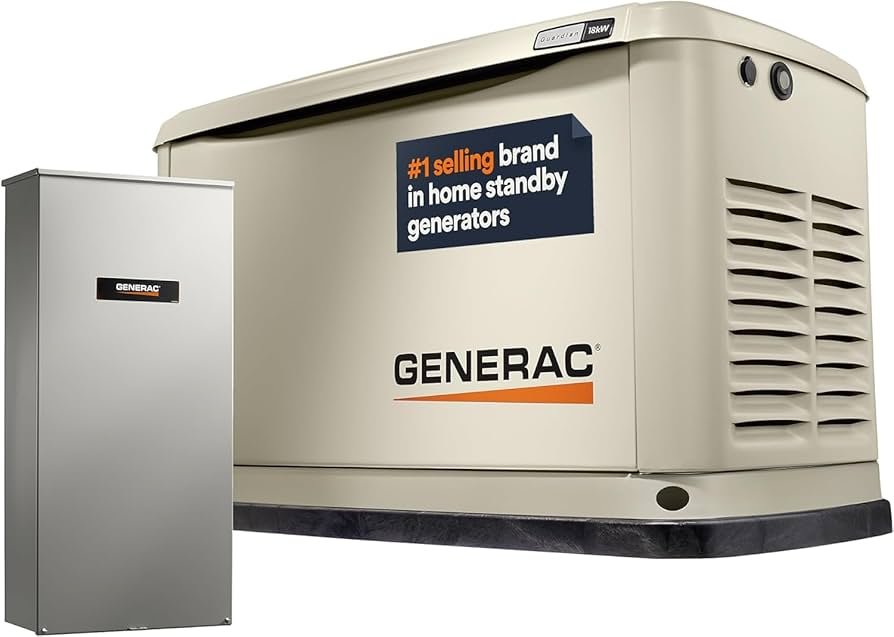Many homes now have smart appliances. These are devices that work with the internet. They can be controlled by phone or voice. Examples include smart refrigerators, smart lights, and smart thermostats.
Power outages can cause problems for these smart devices. When the electricity goes out, smart appliances stop working. This can be a big problem for many families.
A home backup generator can help. It supplies power when the main electricity fails. But how do you connect smart appliances to a backup generator? This article will explain step by step.
What is a Home Backup Generator?
A home backup generator is a machine. It creates electricity when the power goes off. It can run on gas, propane, or diesel. Some are small and portable. Others are large and fixed in one place.
Generators keep your home running during blackouts. They can power lights, refrigerators, and even smart devices.
Why Connect Smart Appliances to a Backup Generator?
- Keep devices working: Smart appliances work best with power.
- Stay connected: Many smart devices need internet and electricity.
- Protect food: Smart refrigerators keep food cold. Backup power helps avoid spoilage.
- Comfort: Smart thermostats control home temperature. Generators keep heating or cooling on.
Things to Know Before Connecting Smart Appliances
Before you start, here are some important points:
- Check your generator’s power capacity.
- Know which appliances are smart in your home.
- Understand how your smart devices connect to power.
- Make sure your generator can supply enough power for these devices.
Step 1: List Your Smart Appliances
Write down all smart appliances you want to power. Examples include:
- Smart refrigerator
- Smart TV
- Smart lights
- Smart thermostat
- Smart speaker
Look at the power label on each device. It shows how much electricity it uses. This is important for the next steps.
Step 2: Check Your Generator’s Power Output
Generators have a power limit. It is measured in watts. You must know your generator’s maximum watts.
| Generator Type | Power Output (Watts) |
|---|---|
| Small Portable | 1,000 – 3,000 |
| Medium Portable | 3,000 – 7,000 |
| Standby Generator | 7,000 – 20,000+ |
Add the wattages of your smart appliances. Ensure the total is less than your generator’s output. If not, you may need a bigger generator.
Step 3: Use an Automatic Transfer Switch (ATS)
An Automatic Transfer Switch helps switch power from the main grid to the generator.
When the power goes off, the ATS turns on the generator automatically. It also connects your smart appliances to the generator.
Without an ATS, you need to plug appliances in manually. This can be unsafe and difficult.
Step 4: Connect Your Smart Appliances to the Home Electrical Panel
Your smart appliances get power from your home’s electrical system. The electrical panel controls this.
When you install a generator, connect it to the panel. The generator will then supply power to the whole house or selected circuits.
Usually, an electrician does this work. It needs special skills and tools. Do not try to do this yourself.

Credit: www.amazon.com
Step 5: Prioritize Important Appliances
Generators have limited power. You might not run all devices at once.
Choose which smart appliances are most important. For example:
- Refrigerator
- Heating or cooling system
- Lights
- Security devices
Turn off less important devices during power outages. This saves power for essential appliances.
Step 6: Test Your Setup
After installation, test the backup power system. Turn off the main power. See if the generator powers your smart appliances.
Check if all devices work as expected. This step helps find problems early.
Credit: www.ecoflow.com
Additional Tips for Smart Appliance Backup Power
- Use surge protectors: Protect devices from power spikes.
- Keep generator fuel ready: Have enough gas or fuel.
- Charge smart device batteries: Some devices have backup batteries.
- Update your smart device software: This helps with connectivity during power changes.
- Consider UPS units: Uninterruptible Power Supplies provide short backup power for devices.
Common Challenges and How to Solve Them
Challenge 1: Generator Power Not Enough
If your generator cannot power all devices, use fewer devices at once.
Or upgrade to a larger generator.
Challenge 2: Smart Devices Lose Internet
Smart devices need internet to work fully. During outages, your internet may stop.
Consider a backup internet source like a mobile hotspot with battery power.
Challenge 3: Devices Not Switching To Generator Power
This happens if the transfer switch is missing or faulty.
Get a professional electrician to install or fix the switch.
Frequently Asked Questions
How Do Smart Appliances Connect To Home Backup Generators?
Smart appliances connect through the home’s electrical system linked to the generator.
Can All Smart Appliances Work With Backup Generators?
Most smart appliances work if the generator provides stable power.
Do I Need Special Wiring For Smart Appliances And Generators?
Yes, proper wiring and transfer switches ensure safe and efficient connection.
How Does A Transfer Switch Help With Smart Appliance Power?
It safely switches power source between the grid and generator.
Conclusion
Connecting smart appliances to home backup generators is simple with the right steps.
Know your appliances and generator power limits first. Use an automatic transfer switch for safety.
Prioritize important devices to save power. Test your system after setup.
This way, your smart home stays working during power outages.
Remember, always get professional help when working with electricity. Safety first.

